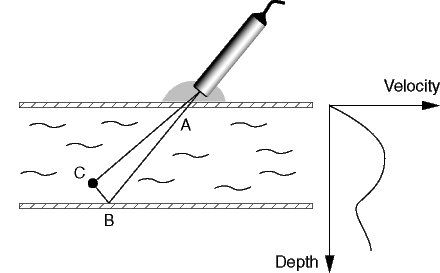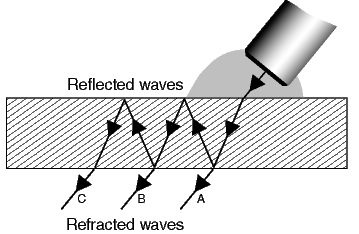The interfaces reflect and modify the acoustic field. The intensity of the
acoustic field received in a point inside the liquid depends on
the material, the shape and the number of these interfaces. This
intensity is most of the time very difficult to evaluate. This
lack of knowledge does not allow a precise determination of the
size of the measuring volume.
These interfaces may generate, in certain situations, artifacts
and induce modifications in the velocity profiles as presented in
the figures.
The ultrasonic beam BC reflected by the far interface transforms
this interface in a transmitter. The same particles contained
in the liquid will backscatter a second time energy in the
direction to the transducer. The depth associated to the path
ABC is located outside the flowing liquid. Imaginary velocity
components are added to the real velocity profile.
The measurement of velocities near the far interface is affected
by this phenomena. The size of the ultrasonic beam determines
mainly the level of this artifact.



